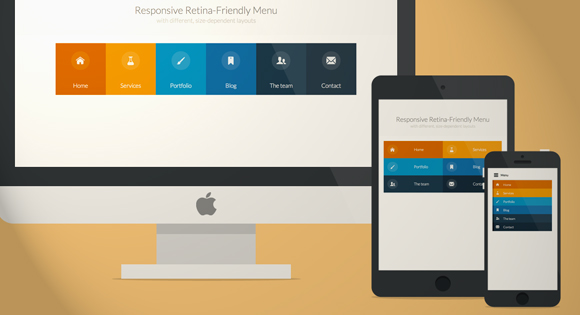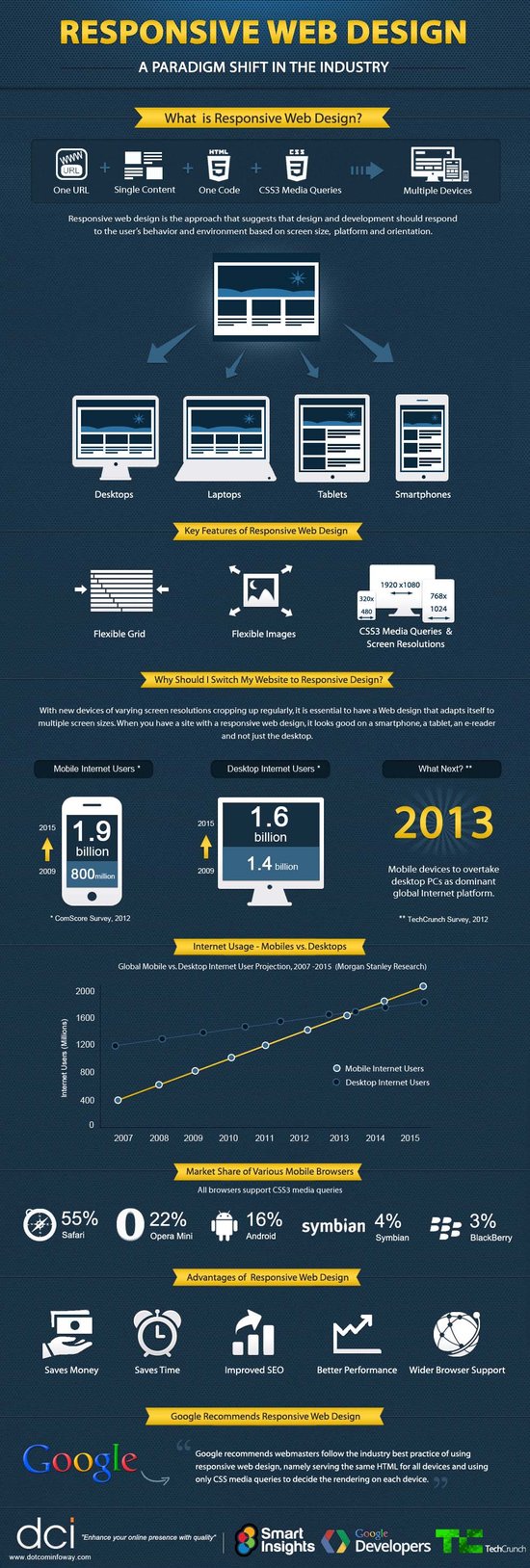Responsive web design isn’t quite the standard yet, but it certainly shows no sign of going away. It is currently the best solution for the majority of website owners attempting to make their site work well for people accessing it, no matter where they are coming from.
A growing minority of internet users are using smartphones and tablets to browse, and especially with Google’s push to punish sites with poorly configured or non-existing mobile sites, there isn’t much time left before site owners will have to choose between going responsive or creating a separate mobile site. To help you choose, Designrfix shared the latest facts about responsive web design.
- Display Doesn’t Affect Load Times – Responsive design largely changes the appearance of sites depending on the device being used to access them. They don’t really affect what is actually loaded when a page is brought up, and so it doesn’t really do much to load times. In other words, you can’t rely on responsive design to “dumb down” and speed up your site on slower machines or lesser resolutions.
- Search Engines Like It – Google has actively supported responsive design as the best solution to going mobile, mostly because it makes the job easier for its crawlers. The webmaster guidelines for Google even address the issue saying, “Google recommends webmasters follow the industry best practice of using responsive web design, namely serving the same HTML for all devices and using only CSS media queries to decide the rendering on each device.”
- It Directly Affects Your SEO Campaign – Running a separate mobile site rather than simply adapting responsive design basically requires running two SEO campaigns for the same site. With the ability to design for all devices with one site, comes the ability to only have one SEO strategy for the site as a whole.
- Most Sites Can Be Turned Responsive – This isn’t a hard and fast rule, but for the most part site owners don’t have to create an entirely new site design when they decide to create a responsive design. Instead, most sites can be converted, saving over half the total cost of a full redesign.
- There Is a Lot of Testing – The main thing people forget to mention when they support responsive design is that designing for all devices means testing for all devices. Going responsive does save you time in the actual design process, but the best rule of thumb for responsive design is if you haven’t tested on a device, your site probably doesn’t work perfectly on it.
I fully predict responsive design to become the standard for all website design in the future because it simply makes more sense for the large number of site owners out there, especially those with limited resources who want to only manage one version of their site.








